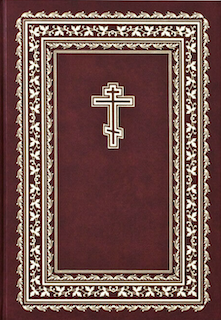Welcome to part 2 of a series about the importance
of Holy Scripture and Holy Tradition based on the the booklet
Which Came First: The Church or the New Testament?
by Fr. A. James Bernstein
[To read the full unabridged booklet without comment from the author of this blog post, please do see the link above.]
Why do we have the four Gospels – Matthew, Mark, Luke and John?
Debate regarding the Gospels
- There were many competing “Gospel” writings such as:
- Gospel according to the Hebrews
- Gospel according to the Egyptians
- Gospel according to Peter
- Eventually the Church narrowed the Gospels down to the four that are accepted today (Matthew, Mark, Luke, John), but in the early years of Christianity there was controversy over which of the four Gospels to include in the canon.
- Most Christians of Asia Minor in the East:
- Used the Gospel of John
- Invoked the Passion account from John to celebrate Pascha on a different day than Christians in the West
- Did not use Matthew, Mark, and Luke as much as John
- Roman Christians in the West:
- Preferred Matthew, Mark and Luke
- Resisted the Gospel of John because some heretics were known to intermingle it with other gnostic teachings
- Another debate arose over the issue of whether there should be separate gospels or one single composite gospel account.
- Justin Martyr’s student, Tatian attempted to write a harmonized gospel, the Diatessaron which was used by the Syrian Church from the Second to the Fourth Century until they finally accepted all four Gospels in the Fifth century.
- Note: Several other attempts at Gospel harmonization have been made over the centuries and can aid in one’s understanding of the chronological events that are reported.
- The Church of Egypt:
- Included the Gospels of the Hebrews, Egyptians and Mattathias
- Held that 1 Clement, Epistle of Barnabas, Preaching of Peter, Revelation of Peter, the Didache, Protoevangelium of James, the Acts of John, Acts of Paul, The Shepherd of Hermas (held in especially high esteem) were all inspired.
- St Irenaeus of Lyons (2nd century) included the Revelation of Peter in his canon.
Ancient Christians in different regions seemed to hold some Gospel accounts in higher esteem than others. Therefore, we can see that a consensus was not quickly formed in the Church regarding the canonicity of the New Testament, let alone the Gospels.
Conclusion
The process to determine which gospels were truly inspired by God spanned at least 300 years but the Church eventually received the four Gospels we have today as canonical – Matthew, Mark, Luke and John. The reception of these Gospels into the New Testament canon and the wisdom to recognize them as Holy Scripture came through Holy Tradition by the leading of the Holy Spirit.
More Information
- https://orthodoxwiki.org/Gospels
- http://orthodoxinfo.com/inquirers/ntcanon_emergence.aspx
- https://www.ocf.net/the-new-testament-canon/
- https://www.oca.org/orthodoxy/the-orthodox-faith/doctrine-scripture/sources-of-christian-doctrine/tradition
- https://www.orthodoxroad.com/scripture-vs-tradition/
- “Which Came First the Church or the New Testament?” by Fr James Bernstein (source for this blog post)

